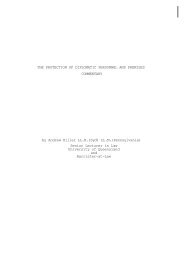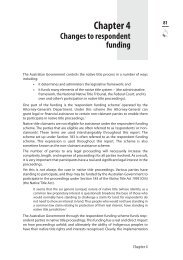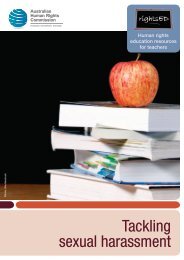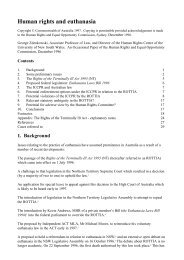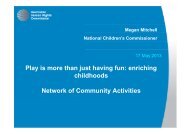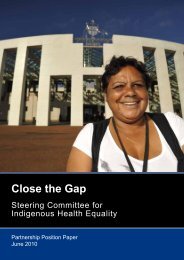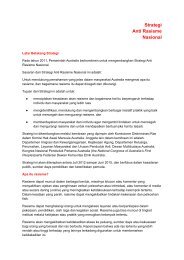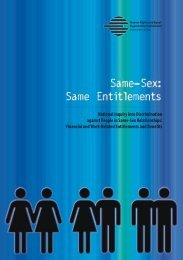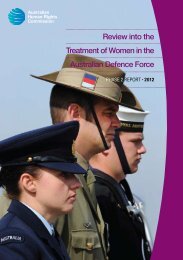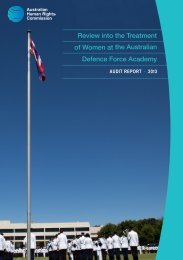Cyberbullying and the Bystander - Bullying - Australian Human ...
Cyberbullying and the Bystander - Bullying - Australian Human ...
Cyberbullying and the Bystander - Bullying - Australian Human ...
- No tags were found...
Create successful ePaper yourself
Turn your PDF publications into a flip-book with our unique Google optimized e-Paper software.
Chapter 1. Executive summaryIn May 2011, <strong>the</strong> Child Health Promotion Research Centre (CHPRC), in partnership with PrimaryCommunication, were commissioned by <strong>the</strong> <strong>Australian</strong> <strong>Human</strong> Rights Commission to conduct a study toidentify <strong>the</strong> most effective strategy, messages, content <strong>and</strong> technology to be used to undertake a socialmarketing campaign targeted at young people aged 13 to 17 years old. The social marking campaign willfocus on encouraging cyberbullying byst<strong>and</strong>ers to take positive, effective <strong>and</strong> safe action when <strong>the</strong>ywitness cyberbullying.The <strong>Cyberbullying</strong> Byst<strong>and</strong>ers Project comprises five stages in a two phase plan. This report presents <strong>the</strong>findings <strong>and</strong> outcomes as part of Phase One (Stages 1 to 3). A communications strategy will be preparedby Primary Communication for <strong>the</strong> <strong>Australian</strong> <strong>Human</strong> Rights Committee which utilises <strong>the</strong> findings in thisreport to inform future directions of <strong>the</strong> campaign.The CHPRC used three strategies to consult with young people to answer <strong>the</strong> following researchquestions:1. How can barriers to taking positive byst<strong>and</strong>er action be removed?2. What would motivate <strong>the</strong> target group to take positive byst<strong>and</strong>er action?3. What are <strong>the</strong> most effective messages to communicate byst<strong>and</strong>er strategies?4. What is <strong>the</strong> most effective content including user generated <strong>and</strong> <strong>the</strong> use of mobile applications?5. What is <strong>the</strong> most effective platform(s) for implementation?First, Cyber Friendly Student Leaders recruited as part of <strong>the</strong> CHPRC‟s Cyber Friendly Schools Project(n=60) were consulted, via a written worksheet, about <strong>the</strong>ir technology use, preferred <strong>Australian</strong>celebrities <strong>and</strong> perceptions of friends‟ behaviours. Second, Student Edge were engaged to conduct amoderated online blog to determine students‟ experiences as byst<strong>and</strong>ers to cyberbullying <strong>and</strong>recommendations for campaign strategies. Of <strong>the</strong> 409 responses posted on <strong>the</strong> blog, 277 (68%) wereprovided by <strong>the</strong> target age group (13-17 year old students) by students nationwide. Finally, Year 8 <strong>and</strong> 10students (n=102) at five Perth metropolitan, non-government secondary schools were recruited toparticipate in focus group discussions (approximately 40 minutes duration) to consolidate <strong>the</strong> <strong>the</strong>mesarising from <strong>the</strong> previous consultation stages. The methods <strong>and</strong> results of each research stage aredescribed in full in Chapters 3 <strong>and</strong> 4 of this report. The findings arising from <strong>the</strong>se stages weretriangulated to answer <strong>the</strong> five research questions comprising <strong>the</strong> <strong>Cyberbullying</strong> Byst<strong>and</strong>ers Project, asdiscussed below.Page 1 of 197



